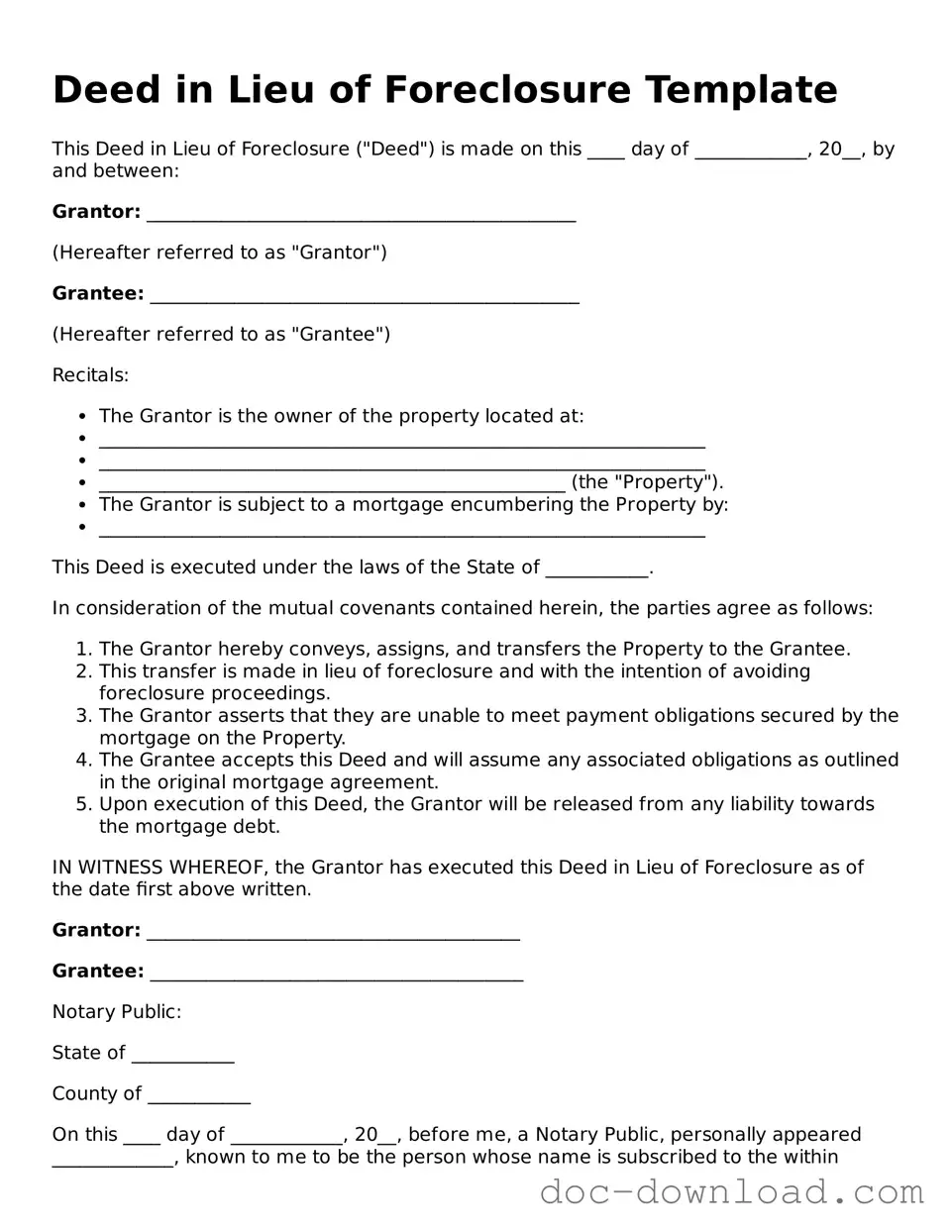Deed in Lieu of Foreclosure Template
This Deed in Lieu of Foreclosure ("Deed") is made on this ____ day of ____________, 20__, by and between:
Grantor: ______________________________________________
(Hereafter referred to as "Grantor")
Grantee: ______________________________________________
(Hereafter referred to as "Grantee")
Recitals:
- The Grantor is the owner of the property located at:
- _________________________________________________________________
- _________________________________________________________________
- __________________________________________________ (the "Property").
- The Grantor is subject to a mortgage encumbering the Property by:
- _________________________________________________________________
This Deed is executed under the laws of the State of ___________.
In consideration of the mutual covenants contained herein, the parties agree as follows:
- The Grantor hereby conveys, assigns, and transfers the Property to the Grantee.
- This transfer is made in lieu of foreclosure and with the intention of avoiding foreclosure proceedings.
- The Grantor asserts that they are unable to meet payment obligations secured by the mortgage on the Property.
- The Grantee accepts this Deed and will assume any associated obligations as outlined in the original mortgage agreement.
- Upon execution of this Deed, the Grantor will be released from any liability towards the mortgage debt.
IN WITNESS WHEREOF, the Grantor has executed this Deed in Lieu of Foreclosure as of the date first above written.
Grantor: ________________________________________
Grantee: ________________________________________
Notary Public:
State of ___________
County of ___________
On this ____ day of ____________, 20__, before me, a Notary Public, personally appeared _____________, known to me to be the person whose name is subscribed to the within instrument, and acknowledged that he/she executed the same for the purposes therein contained.
Witness my hand and official seal.
_____________________________________ (Seal)
Notary Public
My Commission Expires: _____________
